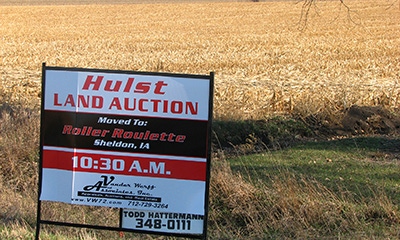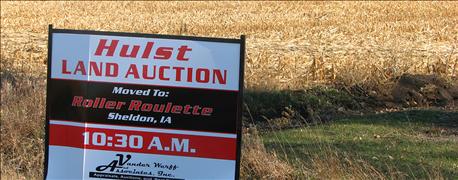April 22, 2016

It’s 1950 and you are at a crossroads. Burning a hole in your pocket is $1,000. The economy is booming and the stock market seems like a perfect place to invest that hard-earned money. But on the way to invest you see a sign offering land for sale; that option sounds good, too. The options are there, which should you choose?

TIMING REALLY MATTERS: Timing is the key in maximizing profit of both land and stock market investments. Iowa State economists have updated their earlier study comparing investment in Iowa farmland and the S
That question is the premise for an article titled “Comparing the stock market and Iowa land values: A question of timing” by Wendong Zhang, Iowa State University Extension economist, and Mike Duffy, retired ISU Extension economist. The article appears in the April 2016 issue of ISU’s Ag Decision Maker. To determine which option provided the better investment, the study compares the returns to farmland and the stock market since 1950. It also discusses important factors to consider over the next few years.
Factors to consider when trying to answer this question
So which is the better investment: farmland or the stock market? Several factors have to be considered, and assumptions made when trying to answer that question.
“This study was designed to provide an intuitive analysis for stakeholders who are interested in investing in farmland and determining how stable their return is,” Zhang says. “The study examines how landholdings perform in relation to other markets, in this particular case the stock market.”
Assuming all dividends from the land were invested back into more acres, the $1,000 investment made in Iowa farmland in 1950 would be worth $1,080,753 if sold today. The investment in the Standard & Poor’s index, again assuming all dividends were reinvested, would be worth $805,646.
Timing key in maximizing profit of land, market investments
As with anything in life, timing is everything. That same $1,000 investment made in 1980 instead of 1950 would be in favor of the S&P today. The value of that S&P investment would be $37,589 while Iowa farmland would be worth $21,224.
While the investment in land made in 1950 would pay out over $275,000 more today than an investment in the S&P that was not always the case over the last 65 years. While farmland outpaced the market investment from 1975-85, it was the investment in stock that was more valuable over much of the last 30 years.
From 1985 until 2005 the investment in the S&P would have been more profitable had it been sold during that time. It wasn’t until the recession of the 2000s that land values climbed above that of the market.
Which is the better investment is a complicated question
“Timing really matters,” Zhang notes. “In previous versions of this study we had emphasized the timing when you started the investment; this study also looks at how long that investment is held. Even if you had invested in Iowa farmland in 1950, if you sold that investment in 2000 it would not have paid off as much because you hadn’t had the chance to enjoy the uptick in the market over the last 15 years.”
With the projected decline in farm income and stagnant commodity prices, investing in farmland right now might not provide a favorable return over the investment in the stock market, at least in the short run. However, says Zhang, “farmland has consistently shown to be a strong investment; Iowa farmland increased in value in more than 80 of the last 100 years. It is a robust investment through the last century and that is why people are interested in farmland investments.”
The question as to which investment is better has no easy answer, as the Ag Decision Maker article clearly shows. The better investment option is dependent upon the time of investment and when those funds are removed.
For farm management information and analysis visit ISU’s Ag Decision Maker site at extension.iastate.edu/agdm; ISU farm management specialist Steve Johnson's site is at extension.iastate.edu/polk/farm-management.
You May Also Like




